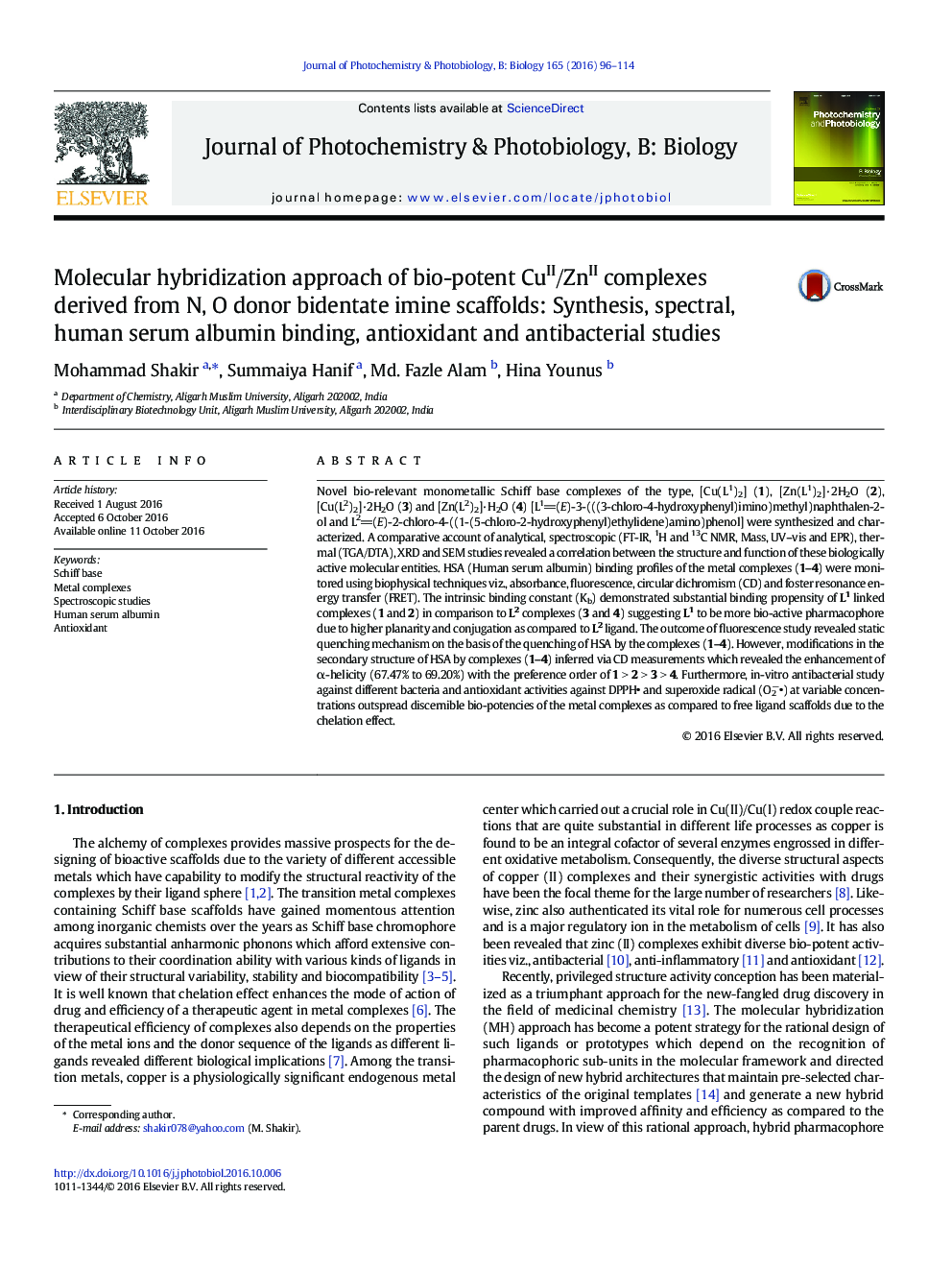| کد مقاله | کد نشریه | سال انتشار | مقاله انگلیسی | نسخه تمام متن |
|---|---|---|---|---|
| 6452580 | 1418068 | 2016 | 19 صفحه PDF | دانلود رایگان |

- Synthesis of CuII/ZnII complexes based on N, O donor bidentate imine scaffolds.
- Validated by analytical, spectroscopic and X-ray diffraction studies.
- HSA binding profiles of metal complexes using biophysical studies.
- In-vitro antioxidant and antibacterial activities.
Novel bio-relevant monometallic Schiff base complexes of the type, [Cu(L1)2] (1), [Zn(L1)2]·2H2O (2), [Cu(L2)2]·2H2O (3) and [Zn(L2)2]·H2O (4) [L1(E)-3-(((3-chloro-4-hydroxyphenyl)imino)methyl)naphthalen-2-ol and L2(E)-2-chloro-4-((1-(5-chloro-2-hydroxyphenyl)ethylidene)amino)phenol] were synthesized and characterized. A comparative account of analytical, spectroscopic (FT-IR, 1H and 13C NMR, Mass, UV-vis and EPR), thermal (TGA/DTA), XRD and SEM studies revealed a correlation between the structure and function of these biologically active molecular entities. HSA (Human serum albumin) binding profiles of the metal complexes (1-4) were monitored using biophysical techniques viz., absorbance, fluorescence, circular dichromism (CD) and foster resonance energy transfer (FRET). The intrinsic binding constant (Kb) demonstrated substantial binding propensity of L1 linked complexes (1 and 2) in comparison to L2 complexes (3 and 4) suggesting L1 to be more bio-active pharmacophore due to higher planarity and conjugation as compared to L2 ligand. The outcome of fluorescence study revealed static quenching mechanism on the basis of the quenching of HSA by the complexes (1-4). However, modifications in the secondary structure of HSA by complexes (1-4) inferred via CD measurements which revealed the enhancement of α-helicity (67.47% to 69.20%) with the preference order of 1 > 2 > 3 > 4. Furthermore, in-vitro antibacterial study against different bacteria and antioxidant activities against DPPH and superoxide radical (O2â) at variable concentrations outspread discernible bio-potencies of the metal complexes as compared to free ligand scaffolds due to the chelation effect.
Graphical Abstract
Journal: Journal of Photochemistry and Photobiology B: Biology - Volume 165, December 2016, Pages 96-114